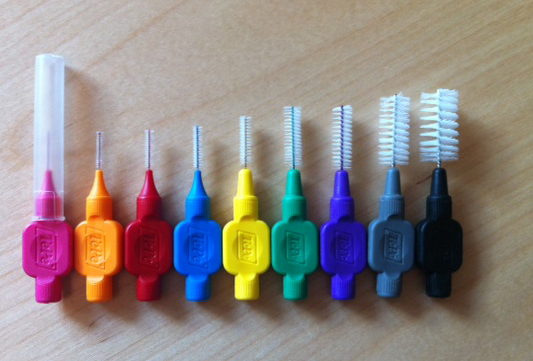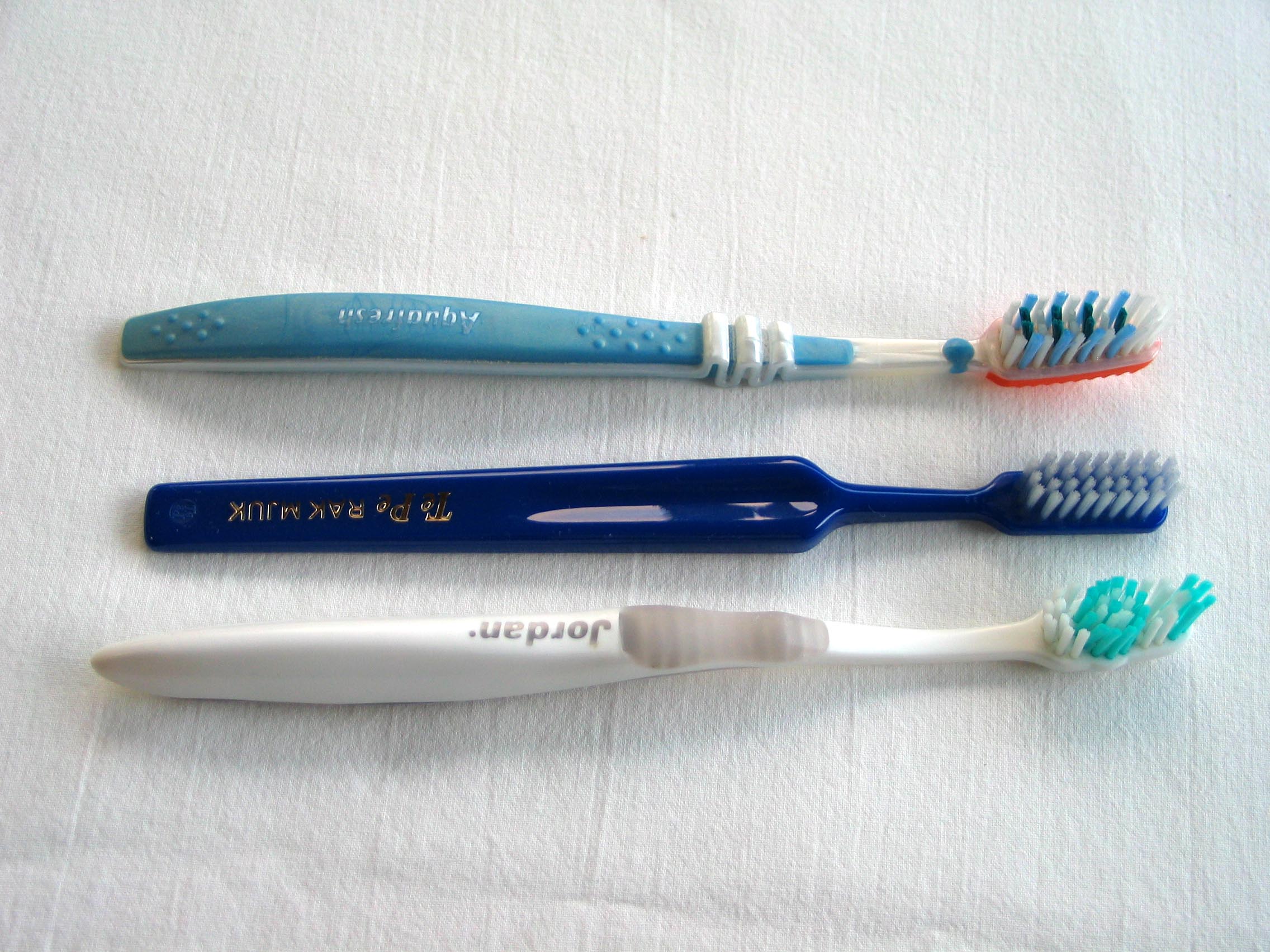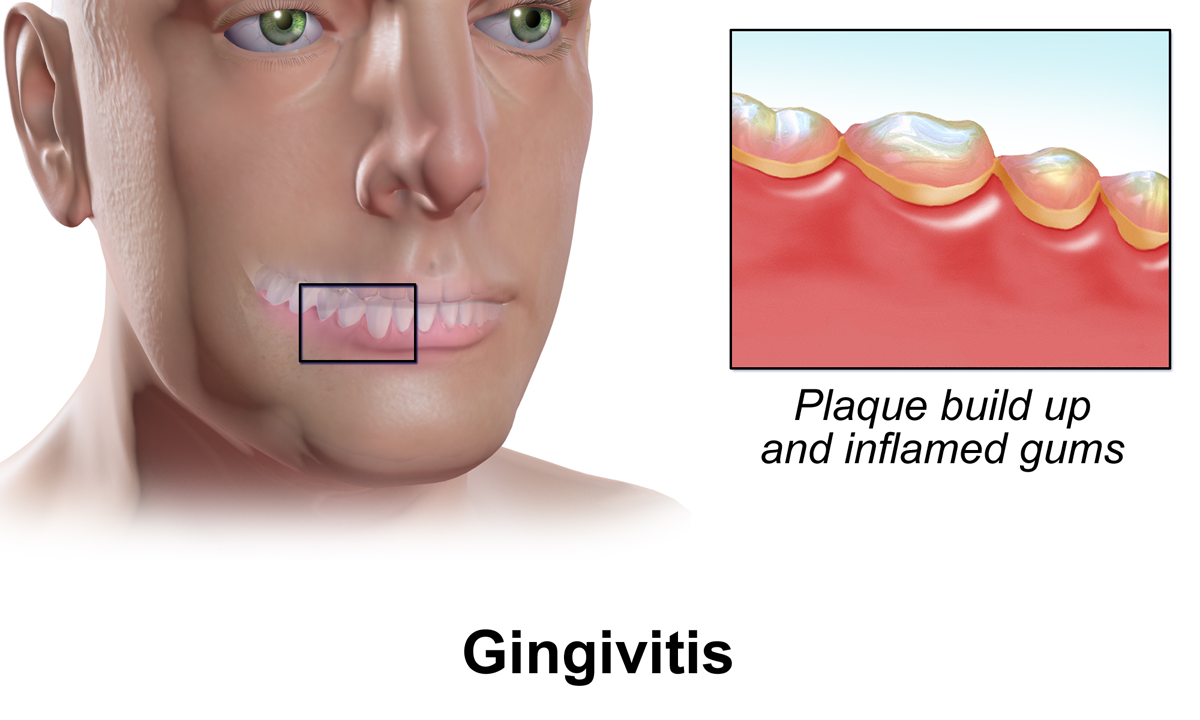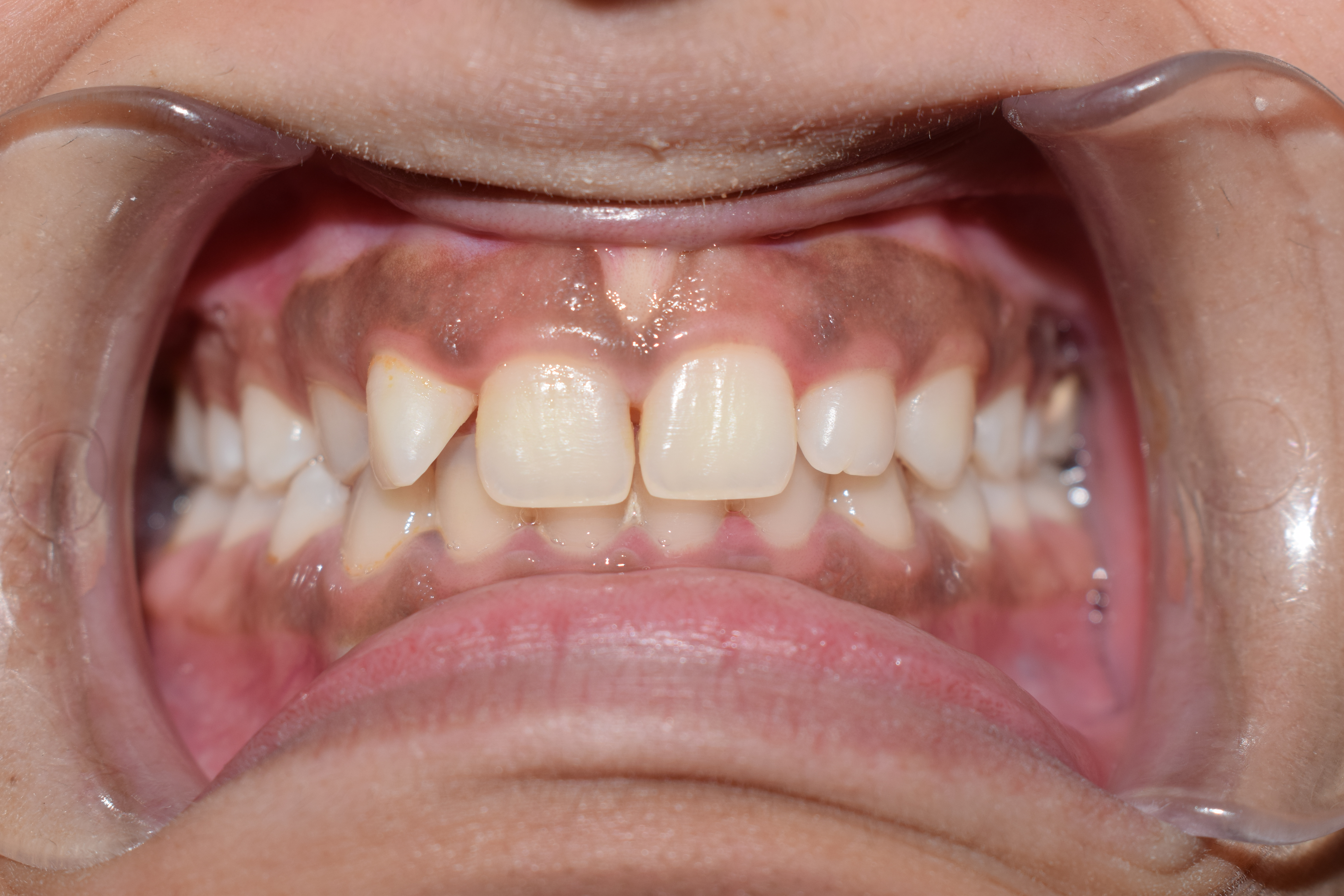|
Flossing
Dental floss is a cord of thin filaments, typically made of nylon or silk, used in interdental cleaning to remove food and dental plaque from between teeth or places a toothbrush has difficulty reaching or is unable to reach. Its regular use as part of oral cleaning is intended to maintain oral health. Use of floss is recommended to prevent gingivitis and the build-up of plaque. The American Dental Association claims that up to 80% of plaque can be removed by flossing, and it may confer a particular benefit in individuals with orthodontic devices. However, empirical scientific evidence demonstrating the clinical benefit of flossing as an adjunct to routine tooth brushing alone remains limited. History Levi Spear Parmly (1790-1859), a dentist from New Orleans, is credited with inventing the first form of dental floss. In 1819, he recommended running a waxen silk thread "through the interstices of the teeth, between their necks and the arches of the gum, to dislodge that irr ... [...More Info...] [...Related Items...] OR: [Wikipedia] [Google] [Baidu] |
Dental Floss (whole)
Dental floss is a cord of thin filaments, typically made of nylon or silk, used in interdental cleaning to remove Human food, food and dental plaque from between Human tooth, teeth or places a toothbrush has difficulty reaching or is unable to reach. Its regular use as part of oral cleaning is intended to maintain oral health. Use of floss is recommended to prevent gingivitis and the build-up of plaque. The American Dental Association claims that up to 80% of plaque can be removed by flossing, and it may confer a particular benefit in individuals with orthodontic devices. However, empirical scientific evidence demonstrating the clinical benefit of flossing as an adjunct to routine tooth brushing alone remains limited. History Levi Spear Parmly (1790-1859), a Dentistry, dentist from New Orleans, is credited with inventing the first form of dental floss. In 1819, he recommended running a waxen silk thread "through the interstices of the teeth, between their necks and the arches of ... [...More Info...] [...Related Items...] OR: [Wikipedia] [Google] [Baidu] |
Interdental Cleaning
Interdental cleaning or interproximal cleaning is part of oral hygiene where the aim is to clean the areas in between the teeth, otherwise known as the proximal surfaces of teeth. This is to remove the dental plaque in areas a toothbrush cannot reach. The ultimate goal of interproximal cleaning is to prevent the development of interproximal caries and periodontal disease. The combined use of tooth brushing and mechanical and manual interdental cleaning devices has been proven to reduce the prevalence of caries and periodontal diseases. Floss Floss is one of the most commonly used interdental cleaners. It is traditionally made of waxed nylon wrapped up in a plastic box. Since dental floss is able to remove some inter-proximal plaque, frequent regular dental flossing will reduce inter-proximal caries and periodontal disease risks. Results of a high-level of evidence meta-analysis recently found that floss may not be the most effective method for interdental cleaning, contrary to c ... [...More Info...] [...Related Items...] OR: [Wikipedia] [Google] [Baidu] |
Dental Plaque
Dental plaque is a biofilm of microorganisms (mostly bacteria, but also fungi) that grows on surfaces within the mouth. It is a sticky colorless deposit at first, but when it forms Calculus (dental), tartar, it is often brown or pale yellow. It is commonly found between the teeth, on the front of teeth, behind teeth, on chewing surfaces, along the gums, gumline (supragingival), or below the gumline cervical margins (subgingival). Dental plaque is also known as microbial plaque, oral biofilm, dental biofilm, dental plaque biofilm or bacterial plaque biofilm. Bacterial plaque is one of the major causes for dental decay and gum disease. It has been observed that differences in the composition of dental plaque microbiota exist between men and women, particularly in the presence of periodontal disease, periodontitis. Progression and build-up of dental plaque can give rise to tooth decay – the localised destruction of the tissues of the tooth by acid produced from the bacterial degrad ... [...More Info...] [...Related Items...] OR: [Wikipedia] [Google] [Baidu] |
Toothbrush
A toothbrush is a special type of brush used to clean the Human tooth, teeth, gingiva, gums, and tongue. It consists of a head of tightly clustered bristles, atop of which toothpaste can be applied, mounted on a handle (grip), handle which facilitates the cleaning of hard-to-reach areas of the mouth. They should be used in conjunction with something to clean between the teeth where the bristles of the toothbrush cannot reach - for example Dental floss, floss, tape, interdental brushes or toothpicks. They are available with different bristle textures, sizes, and forms. Most dentists recommend using a soft toothbrush since hard-bristled toothbrushes can damage tooth enamel and irritate the gums. Because many common and effective ingredients in toothpaste are harmful if swallowed in large doses, tooth paste should instead be spat out. The act of brushing teeth is most often done at a sink within the kitchen or bathroom, where the brush may be rinsed off afterwards to remove any deb ... [...More Info...] [...Related Items...] OR: [Wikipedia] [Google] [Baidu] |
Oral Cleaning
Oral hygiene is the practice of keeping one's oral cavity clean and free of disease and other problems (e.g. bad breath) by regular brushing of the teeth (dental hygiene) and adopting good hygiene habits. It is important that oral hygiene be carried out on a regular basis to enable prevention of dental disease and bad breath. The most common types of dental disease are tooth decay (''cavities'', ''dental caries'') and gum diseases, including gingivitis, and periodontitis. General guidelines for adults suggest brushing at least twice a day with a fluoridated toothpaste: brushing before going to sleep at night and after breakfast in the morning. Cleaning between the teeth is called interdental cleaning and is as important as tooth brushing. This is because a toothbrush cannot reach between the teeth and therefore only removes about 50% of plaque from the surface of the teeth. There are many tools available for interdental cleaning which include floss, tape and interdental brushes; ... [...More Info...] [...Related Items...] OR: [Wikipedia] [Google] [Baidu] |
Gingivitis
Gingivitis is a non-destructive disease that causes inflammation of the gums; ulitis is an alternative term. The most common form of gingivitis, and the most common form of periodontal disease overall, is in response to bacterial biofilms (also called plaque) that are attached to tooth surfaces, termed ''plaque-induced gingivitis''. Most forms of gingivitis are plaque-induced. While some cases of gingivitis never progress to periodontitis, periodontitis is always preceded by gingivitis. Gingivitis is reversible with good oral hygiene; however, without treatment, gingivitis can progress to periodontitis, in which the inflammation of the gums results in tissue destruction and bone resorption around the teeth. Periodontitis can ultimately lead to tooth loss. Signs and symptoms The symptoms of gingivitis are somewhat non-specific and manifest in the gum tissue as the classic signs of inflammation: *Swollen gums *Bright red gums *Gums that are tender or painful to the touch *B ... [...More Info...] [...Related Items...] OR: [Wikipedia] [Google] [Baidu] |
Sodium Fluoride
Sodium fluoride (NaF) is an inorganic compound with the formula . It is a colorless or white solid that is readily soluble in water. It is used in trace amounts in the fluoridation of drinking water to prevent tooth decay, and in toothpastes and topical pharmaceuticals for the same purpose. In 2022, it was the 221st most commonly prescribed medication in the United States, with more than 1million prescriptions. It is also used in metallurgy and in medical imaging. Uses Dental caries Fluoride salts are often added to municipal drinking water (as well as to certain food products in some countries) for the purpose of maintaining dental health. The fluoride enhances the strength of teeth by the formation of fluorapatite, a naturally occurring component of tooth enamel. Although sodium fluoride is used to fluoridate water and is the standard by which other water-fluoridation compounds are gauged, hexafluorosilicic acid (H2SiF6) and its salt sodium hexafluorosilicate (Na2Si ... [...More Info...] [...Related Items...] OR: [Wikipedia] [Google] [Baidu] |
Fluoride
Fluoride (). According to this source, is a possible pronunciation in British English. is an Inorganic chemistry, inorganic, Monatomic ion, monatomic Ion#Anions and cations, anion of fluorine, with the chemical formula (also written ), whose salts are typically white or colorless. Fluoride salts typically have distinctive bitter tastes, and are odorless. Its salts and minerals are important Reagent, chemical reagents and industrial chemicals, mainly used in the production of hydrogen fluoride for fluorocarbons. Fluoride is classified as a weak base since it only partially associates in solution, but concentrated fluoride is corrosive and can attack the skin. Fluoride is the simplest fluorine anion. In terms of charge and size, the fluoride ion resembles the hydroxide ion. Fluoride ions occur on Earth in several minerals, particularly fluorite, but are present only in trace quantities in bodies of water in nature. Nomenclature Fluorides include compounds that contain ionic ... [...More Info...] [...Related Items...] OR: [Wikipedia] [Google] [Baidu] |
Toothpaste
Toothpaste is a paste or gel dentifrice that is used with a toothbrush to clean and maintain the aesthetics of Human tooth, teeth. Toothpaste is used to promote oral hygiene: it is an abrasive that aids in removing dental plaque and food from the teeth, assists in suppressing halitosis, and delivers active ingredients (most commonly fluoride) to help prevent tooth decay (dental caries) and gum disease (gingivitis).American Dental Association Description of Toothpaste Due to variations in composition and fluoride content, not all toothpastes are equally effective in maintaining oral health. The decline of tooth decay during the 20th century has been attributed to the introduction and regular use of fluoride-containing toothpastes worldwide. Large amounts of swallowed toothpaste can be poisonous. Common colors for toothpaste include white (sometimes with colored stripes or green tint) and blue. History Early toothpastes Since 5000 BCE, the Egyptians made a tooth powder, which cons ... [...More Info...] [...Related Items...] OR: [Wikipedia] [Google] [Baidu] |
Gumline
The gums or gingiva (: gingivae) consist of the mucosal tissue that lies over the mandible and maxilla inside the mouth. Gum health and disease can have an effect on general health. Structure The gums are part of the soft tissue lining of the mouth. They surround the teeth and provide a seal around them. Unlike the soft tissue linings of the lips and cheeks, most of the gums are tightly bound to the underlying bone which helps resist the friction of food passing over them. Thus when healthy, it presents an effective barrier to the barrage of periodontal insults to deeper tissue. Healthy gums are usually coral pink in light skinned people, and may be naturally darker with melanin pigmentation. Changes in color, particularly increased redness, together with swelling and an increased tendency to bleed, suggest an inflammation that is possibly due to the accumulation of bacterial plaque. Overall, the clinical appearance of the tissue reflects the underlying histology, both in heal ... [...More Info...] [...Related Items...] OR: [Wikipedia] [Google] [Baidu] |









